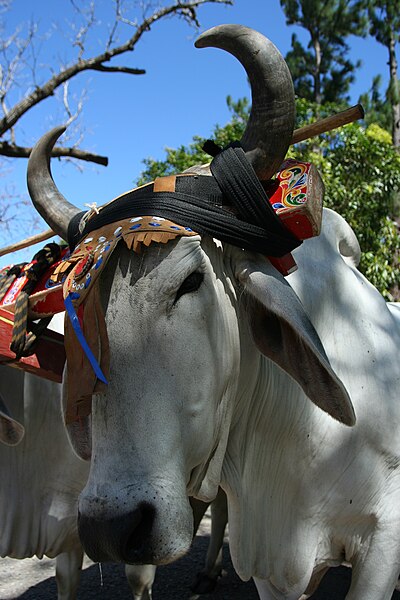Enterolobium cyclocarpum, commonly known as conacaste, guanacaste, caro caro, devil's ear tree, monkey-ear tree, or elephant-ear tree, is a species of flowering tree in the family Fabaceae, that is native to tropical regions of the Americas, from central Mexico south to northern Brazil (Roraima) and Venezuela. It is known for its large proportions, expansive, often spherical crown, and curiously shaped seedpods. The abundance of this tree, especially in Guanacaste Province, Costa Rica, where it is prized for the shady relief it provides from the intense sun, coupled with its immensity, have made it a widely recognized species. It is the national tree of Costa Rica.
Enterolobium cyclocarpum
Elephant-ear shape seedpods
Branches and foliage of a young Enterolobium cyclocarpum, about 3 years old, in Naiguata, Venezuela
An anole lizard climbing a cultivated guanacaste seedling in southern Florida
Guanacaste is a province of Costa Rica located in the northwestern region of the country, along the coast of the Pacific Ocean. It is bordered by Nicaragua to the north, Alajuela Province to the east, and Puntarenas Province to the southeast. It is the most sparsely populated of all the provinces of Costa Rica. The province covers an area of 10,141 square kilometres (3,915 sq mi) and as of 2010, had a population of 354,154, with annual revenue of $2 billion.
A beach in the Guanacaste Province.
Typical headdress of Costa Rican oxen
Typical Costa Rican ox-drawn carts carry wood during an annual festival in Nicoya, Guanacaste.







